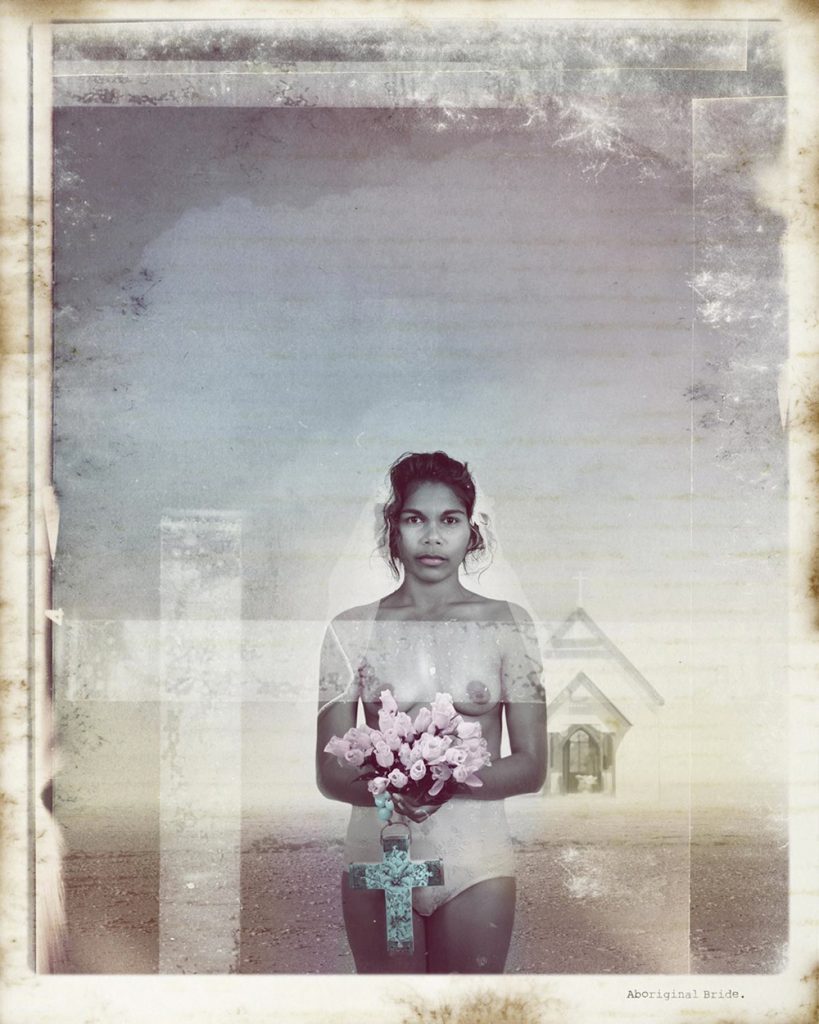Queen’s land Blak Portraiture: Cairns Art Gallery
Michael Cook
17 May - 11 Aug 2019
Presented in partnership with the Cairns Indigenous Art Fair, Queen’s Land Blak Portraiture explores the relationships between personal, cultural and national identity in relation to historical and contemporary portrait images by Indigenous and non-Indigenous artists.
The impetus for developing the exhibition is driven by the Gallery’s collection and program focus on the art and culture of the world’s tropic zone, and our particular location as the gateway to the diverse cultures of the Torres Strait Islands and Cape York Peninsula Aboriginal communities. The exhibition’s curatorial concept for this ambitious project has been developed by the Gallery Director, Andrea May Churcher. Senior Curator, Julietta Park, has worked with Consultant Curator Djon Mundine OAM, Artistic Director of CIAF, Janina Harding and Michael Aird, Research Fellow, School of Social Science, University of Queensland, to realise the exhibition.
Queen’s Land Blak Portraiture includes early archival photographs taken during first settlement, juxtaposed with paintings and prints by Indigenous and non-Indigenous artists from the twentieth century through to the present day. Together these works explore narratives about ways in which Aboriginal and Torres Strait Islander peoples in Queensland have been represented or have chosen to represent themselves over the past one hundred and fifty years. Different narratives are informed by complex historical, political, cultural and social conditions that have profoundly changed ways in which identity and self-identity have been, and continue to be, portrayed through portraiture.
The exhibition also includes newly commissioned works by Danie Mellor, Ryan Presley and Tony Albert, and works on loan from private and public collections from around Australia. Together these works trace how portraiture has been shaped by prevailing government policies and social attitudes of the day.
The concept of portraiture is one that is challenged through works in the exhibition, as it is evident that, for Indigenous peoples, portraiture and identity extend beyond the generally accepted western notion of a vertical representation of a face to depict the image of a person. For Aboriginal and Torres Strait Islander peoples, identity and portraiture can be represented and interpreted through a cultural totem, a marking, a foot or hand print, a name or a ritual. It is only in very recent times that photographic portraiture has been available to Indigenous artists, and through this medium they have sought to challenge common perceptions of their identity in order to present images of themselves and others as they want to be seen. In Michael Aird’s recent essay commissioned by the Gallery, he explains:
Regardless of how and why photographs were taken, Indigenous people are often able to look past the exploitative nature of some of these images and just accept them as treasured images of family members. To reflect on the way Aboriginal and Torres Strait Island people have been represented in photographs, it is often simplified to a story of exploitation – yet, the story is much more complex, with stories of Indigenous people taking control of exactly how they wanted to be represented at different points in time.
Over the past two hundred years the journey for Indigenous peoples in Queensland has been long and fraught, and in many cases its effects can be read in the eyes and faces of the people who look out from the portraits which have been brought together for the first time for this immersive exhibition.

